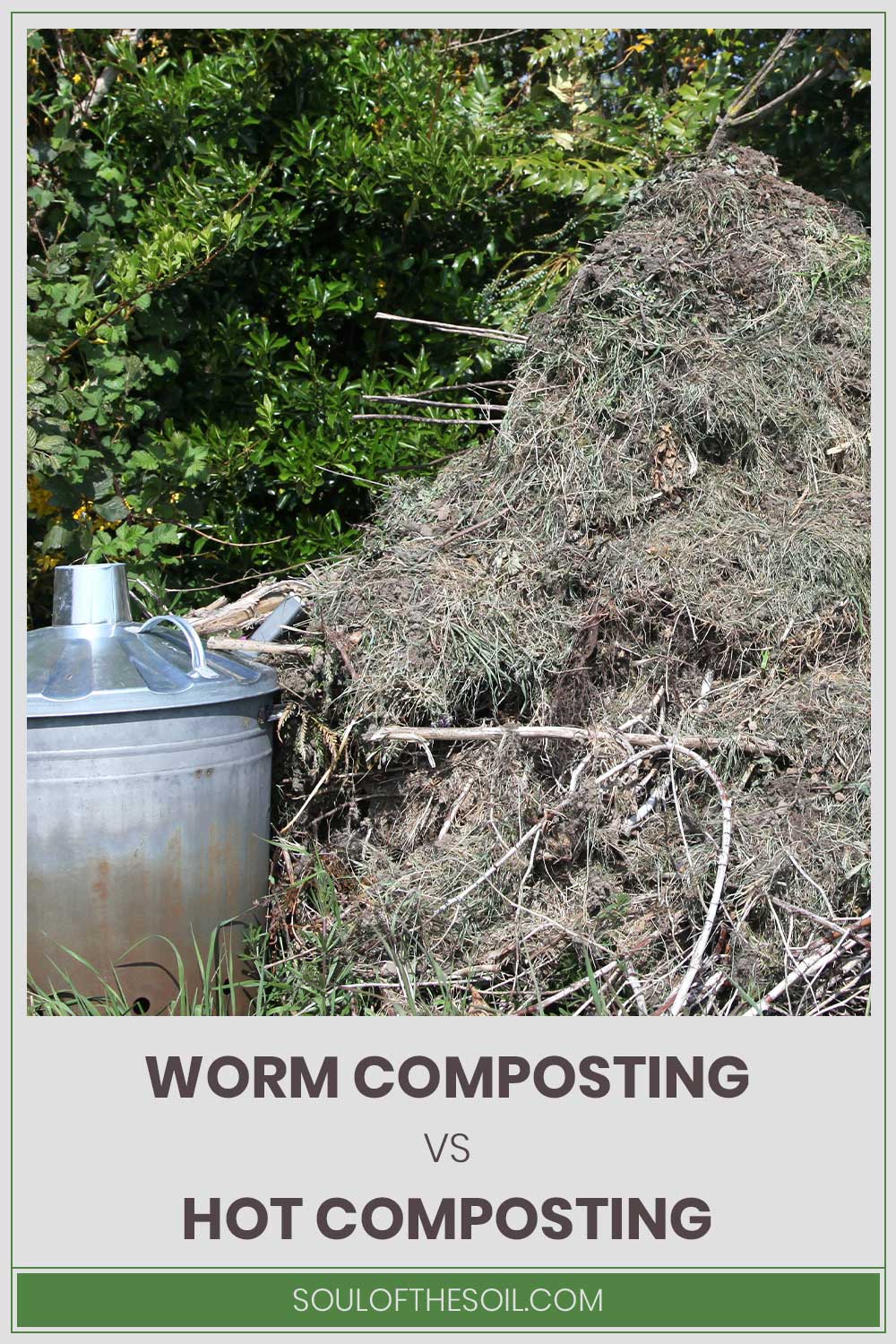Worm Composting vs. Hot Composting
We may earn commissions for purchases made through links on our site. Learn more on our about us page.
When thinking about a compost heap, there are going to be different types of compost processes, but for this article’s purposes, we will cover hot composting and worm methods.
Hot composting is the process of using the sun’s light, or other heat sources, to drive the chemical reactions within the heap and keep the right conditions for healthy bacterial decomposition to produce rich soils.
Worm composting, in some ways, is the easier option. However, when it comes to healthy soil production, this might be the most effective, especially since this is the method that planet earth uses to recycle materials naturally.

What is the Difference?
A compost heap is to discard scraps from the kitchen, clipping any materials from yard work and mixing them into a soil-producing compost.
Hot composting will concentrate on keeping the pile of soil heated to a temperature between forty and sixty-five degrees Celsius, which drives healthy bacterial reproduction rates upward.
Worm composting will not have a temperature regulatory need for the process to work. Worms only need to have above-freezing temperatures.
The nice thing will be that a healthy compost environment will produce its own heat, keeping the worms warm enough to continue working on the decomposing materials.
What are the Similarities?
The obvious similarity is the fact that both composting processes are intended to build and create rich potting or gardening soils.
Both of these processes will effectively take dry baked soils, add the right amounts of nitrogen and rich materials, and create renewed soils that can be used on lawns, garden beds, farming fields, or just for the house flowers.
Other similarities will be the benefits of growing healthy bacterial cultures and the speeds at which they create new soils, which is much faster than the basic composting practices.
Pros and Cons: Worm Composting vs. Hot Composting
Regarding hot composting, the cons will be in the electricity usage rates that might become somewhat expensive and make this unfavorable for some budgets. However, the pros will be the immensely faster speeds at which the compost produces quality growing soils.
The pros of worm composting will be the ease with which the worms churn out quality earthen dirt from just about any natural item.
Of course, there is going to be a challenge when it comes to keeping the creepy crawlies in the compost bin itself, but then if there’s food, it will be welcoming to the wiggling workers.
Which one is More Common?
When it comes to these two different approaches to composting will be stark in contrast when concerning popularity.
In addition, the hot boxes and equipment needed for creating the right conditions for the hot composting method, as mentioned above, will be expensive compared to the costs of setting up a worm compost.
Therefore, the clear answer here is the worm compost. In a way, the earth is a giant living compost heap that uses the worm method. Therefore, even novice compost heap makers cannot make a mistake when it comes to having worms churn out fresh soils.
Which one is More Efficient?
The most efficient form of composting is the worm compost method. There is no comparison when it comes to the efficiency of these crawling workers. Along with other insects, the earth has chosen this method for itself.
This does not negate the speed in which the hot composting systems work, creating conditions suitable for faster bacterial reproduction, and the heat helps break down chemical bonds of the natural materials quicker.
The speed does not, however, equate to efficiency, as when the natural materials are all used up, the compost becomes inactive, and bacterial cultures perish.
Final Thoughts on Worm Composting vs. Hot Composting
Composting is an art in which humanity can take a page from mother earth. When it comes to refreshing the dirt in which we grow foods and other crops, it takes nitrogen and can be aided by human composting efforts.
When you think about the earth, the molten core churns daily, creating magnetic fields and warmth but also pushing up melted natural materials.
Then you think about a fluid mantel layer. The dirt and soils are constantly being refreshed and churned over and replenished without end.
These natural processes provide plant life with the nutrients needed to grow trees and flowers and then provide life-sustaining nourishment to the herbivores of the planet.



Leave a Reply
You must be logged in to post a comment.